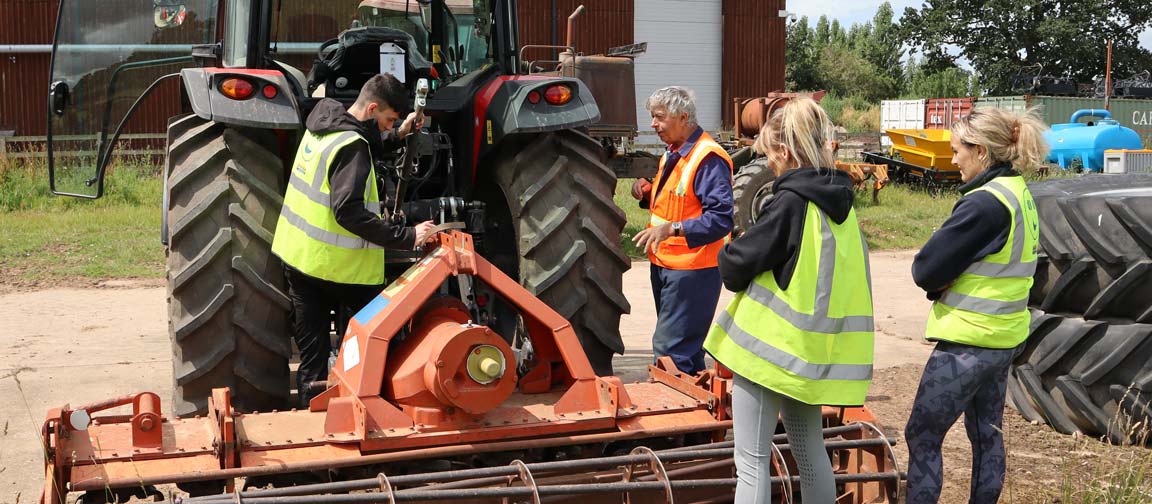How to choose a quality training provider
19 March: Site maintenance at 16:00 GMT today - if you are logged in at this time you will be logged out briefly.
How to choose a quality training provider
How to choose a quality training provider


This TIAH Guide looks at the key considerations you should make when looking for a training provider. It also outlines how to identify your priorities when considering new training.
One way to do this is through training programmes offered by various providers. However, with so many available options, choosing the right training provider for your needs can take time and effort. In this article, we’ll discuss some key factors to consider when choosing a training provider.
Understand your goals
Before choosing a training provider, it's crucial you have a clear understanding of what you’d like to get out of training. Clear goals help ensure you select the most suitable provider and course content.
If you're considering a new career or change of role but aren’t sure of the skills you might need, researching job profiles and recruitment websites can provide valuable insight. Job adverts often outline the qualifications and skills necessary for the role.
If you’re looking to upskill for a new job, a nationally accredited course will likely be something that a future employer will recognise.
Are you looking to gain a specific skill? In that case, you'll want a training course focused on the topic you're interested in and will teach you all there is to know about that subject.
Another way to figure out your current skills and any new ones you might need is by using TIAH’s Capability Framework. It's a useful tool that helps you assess your skill levels and gaps, guiding you towards achieving your goals.
Remember, not all courses need to be career-driven. Sometimes, taking a course out of personal interest or passion can be just as rewarding. You might also pick up valuable ‘softer’ skills like communication, problem-solving, or teamwork.
Expertise and experience
When choosing a training provider, the first thing to consider is their expertise and experience in the farming and growing industry. Look for providers who have a deep understanding of the industry and have worked with relevant partners. Choosing a provider with practical knowledge of the subject matter and who can offer real-world solutions to your challenges is essential.
Similarly, the reputation of the organisation and the level of the course you choose can help ensure you stand out when applying for jobs.
Course content
Look for a provider offering courses relevant to your specific needs and goals. For example, if you’re looking to focus more on environmental targets, you may want to look at training providers that offer courses on conservation. If you’re looking to improve your business skills, you may want to look for a provider that offers marketing or financial management courses.
Delivery method
The delivery method of the training is also an important factor to consider. Some training providers offer in-person training, while others offer online training or a combination of both.
Online learning
Online training is an excellent option if you have limited time, live in a remote location, or want to study when and wherever you like! If you're self-motivated and self-disciplined, online courses can provide a tailored learning experience that fits your lifestyle. These courses often offer videos, interactive quizzes, and discussion forums to enhance learning.
In-person learning
Classroom-based courses may be more suitable for those who thrive in social environments and enjoy interacting with other learners. In-person training provides opportunities for networking, group discussions, and collaborative problem-solving, which can enhance your understanding of the topic you're learning about. Additionally, having a set time and place and instructor-led sessions can help keep you on track if you find it challenging to maintain self-discipline in your studies.
Blended learning
Some course providers offer a mixture of in-person and online training, usually called ‘blended learning.’ This provides a well-rounded and flexible approach to learning. Blended learning might take the form of online resources and self-paced learning with scheduled in-person workshops, lessons, or practical sessions. Blended learning can provide the benefits of online training while maintaining opportunities for social and hands-on experience.
We're helping you find the right training providers
You can filter the results by the subjects the providers cover or by their location.
Trainer credentials
It’s also important to consider the credentials and reputation of the trainers themselves. Look for trainers who have experience in the industry and have relevant qualifications or certifications. A good trainer should be able to provide you with practical advice and real-world examples.
Funding the course
It’s a good idea to research whether there are free courses or grants, government funding, or courses that offer payment plans. These options can make accessing the training you need easier without worrying about the financial strain.
Additionally, if you want to enhance your skills for your current role or aim for a promotion, consider discussing your training goals with your employer. Many employers recognise the value of investing in their employees and may be willing to help fund your course since it ultimately contributes to the overall success of their business.
Reviews and testimonials
Be sure to check reviews and testimonials from other farmers and growers who have taken courses from the provider you are considering. This can give you a good idea of the quality of the training and the level of customer service provided.
Planning pays off
Choosing the right training provider is crucial for your success. Consider the expertise and experience of the provider, the course content, the delivery method, the credentials of the trainers, and reviews and testimonials from other customers.
Considering these factors carefully before making your decision will put you in the best position to select a training provider that meets your specific needs and can help you achieve your goals.